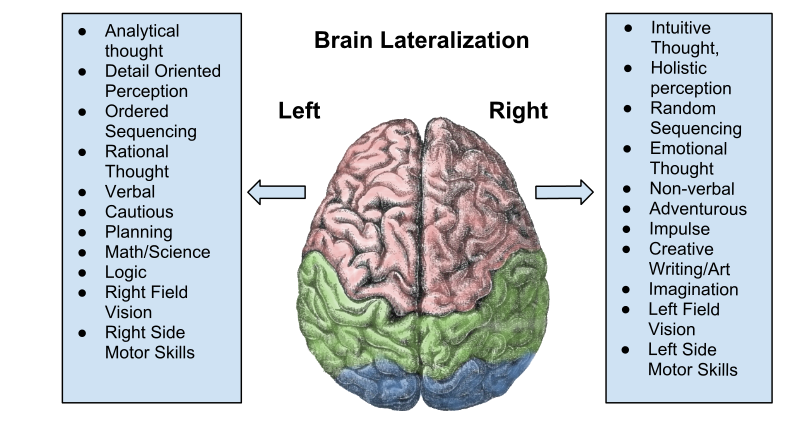The Crowley Method to curing the yips.
Dr. Richard Crowley of San Francisco has been the yips guru of baseball for over 30 years.
Crowley, who holds a PhD. in clinical psychology, an M.S. degree in psychiatric social work, and a B.A. degree in psychology, has worked with hundreds of patients to help them overcome their yips. He made a name for himself after successfully helping former Los Angeles Dodgers’ second baseman, Steve Sax, through a case of throwing yips.
According to Crowley, “all of our fears and anxieties are kept in a part of our brains called the ‘unconscious’ and, generally, what happens with the yips is that something external happens that stirs up those emotions in the unconscious.”
That external something could be anything -- an error, a missed putt, a failed attempt, an accident.
 Diagram of the left and right brain. (Photo: Wikimedia Creative Commons "Brain Lateralization.")
Diagram of the left and right brain. (Photo: Wikimedia Creative Commons "Brain Lateralization.")
The human brain has two hemispheres -- left and right -- and the left-brain processes information differently than the right.
The left-brain is analytical and processes logical, rational issues. The right brain is intuitive and regarded as creative. This is where emotions, imagination, intuition, and the “unconscious” exist.
According to Crowley, the biggest problem with the yips is that most athletes and coaches don’t understand that they are a right brain issue.
As an athlete tries to understand why they are having such a difficult time performing a routine task, they will use the left-brain and think logically and mechanically.
But the yips can’t be solved with mechanics or logic because they are illogical and rest in the right brain.
“I give my patients no advice,” said Crowley. “They take no notes when I work with them.”
According to Crowley, giving advice to a yips-stricken athlete is the worst thing a coach could do.
“Most coaches only see mechanics,” Crowley said. “And by trying to change a player’s mechanics, all it does is make that player think even more about their throw [or task] when in fact what they need to do is not think at all.”
So what does Crowley do to help release an athlete from the wrath of the yips?
 Dr. Richard Crowley's book, "Mentalball."
Dr. Richard Crowley's book, "Mentalball."
“I take them into their right brain where all their emotions are, their imagination, and the ‘unconscious,’” he said.
The right side of the brain processes information metaphorically, and by speaking to an athlete and taking them through a series of metaphors, Crowley is able to make their brain realize how it works.
“By talking metaphorically, we’re talking to the place that the problem exists,” explained Crowley.
Once a patient understands how their mind works metaphorically, they are then able to recognize positive, negative, and neutral images that enter their mind.
Once the patient is able to recognize these images, they can tune out the negative thoughts by focusing intently on the positive or neutral ones. Doing this stops the mind from replaying negative images over and over again.
When mind is able to calm down and stop obsessing over negative thoughts, it will allow the body to preform the routine tasks that had previously seemed impossible to the athlete.
To better understand the right hemisphere of the brain, contact Dr. Crowley or buy his books here.